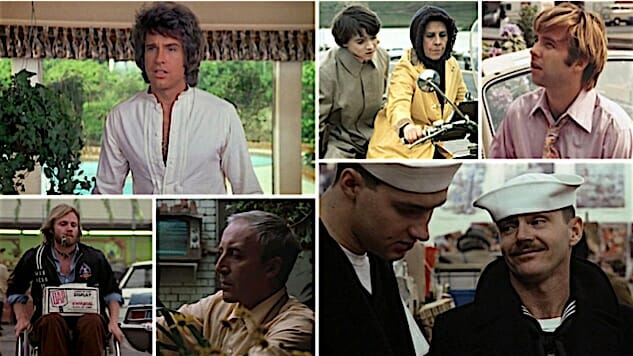
Even though he came to prominence during the renowned late ’60s-’70s “New Hollywood” era, Hal Ashby never really attained the widespread adulation that peers like Martin Scorsese, Brian DePalma, Francis Ford Coppola, George Lucas and Steven Spielberg enjoyed. As decades passed after his untimely death due to pancreatic cancer in 1988, his value as a unique talent in American film history has increased in hindsight, thanks primarily to works like Harold and Maude and Being There gradually being recognized as visionary classics.
Ashby’s tumultuous career was certainly not helped by his infamous drug addiction and perfectionist behavior. But like Robert Altman, his goal was to first and foremost find the truth within his characters, even if that meant a swift blow into his projects’ mainstream appeal. A true hippie himself, Ashby was fascinated with honest-to-goodness American-made eccentrics, goofballs, hardheads, dreamers, disruptors, frail and naïve souls, and of course the downtrodden. None of those subjects particularly screamed “box office gold.”
He might not have been a legend in his time, but it would be a major disservice to downplay Ashby’s tremendous influence on American cinema during the decades following his death. Hell, half of the quirky indies of the last 25 years or so should have ended with a text of gratitude to his name. With Hal, a documentary on Ashby currently in limited release, we decided to rank his films from worst to best. (We’re only ranking his fictional features, so don’t look for the 1983 Rolling Stones concert film Let’s Spend The Night Together.)
11.Second-Hand Hearts (1981)

Those familiar with Ashby’s biography probably are not surprised to see his ’80s output at the very bottom of this list. He spend a chunk of the decade struggling with his strained relationship with Lorimar, the production company he was under contract to. The films he made for Lorimar were giant flops, which gave the company carte blanche to treat him like any other gun for hire and continuously undermine his artistic choices. Ashby’s increasing drug use didn’t help matters either. Even during this self-destructive cocktail of a partnership, the downright unwatchable mess that is Second-Hand Hearts is a whole other kind of disaster. Ashby’s always been enamored with oddballs living at the edges of American society, so it makes sense for him to be drawn to the broad comedy of two hapless losers who get hitched during a drunken bender and decide to drive to California, encountering one setback after the other in the process. Second-Hand Hearts plays like an overtly episodic and nightmarish white trash version of National Lampoon’s Vacation. Robert Blake is wildly miscast as Loyal, an alcoholic who swears allegiance to the almost supernaturally naïve Dinette (Barbara Harris). He’s supposed to come across as a likable loser, but his mugging performance feels more like amateur hour at a Three Stooges impersonators revue. Add to this some howlingly wrongheaded attempts at non-PC comedy, like a sub-plot that involves a “hilarious” bit about child molestation, and Second-Hand Hearts becomes the one film that should be stricken from Ashby’s filmography.
10. The Slugger’s Wife (1985)
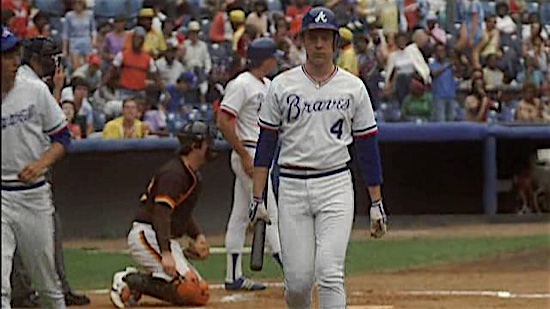
A romantic dramedy written by Neil Simon and directed by Ashby about an anxiety-ridden major league baseball star named Daryll (Michael O’Keefe) not being able to play right unless things are hunky dory with his pop singer wife, Debby (Rebecca De Mornay) sounds promising. Unfortunately, the film is an atonal train wreck that takes itself far too seriously when it should be goofy, and is unintentionally funny when it was supposed to be melodramatic. First off, the gender politics of The Slugger’s Wife, which posits that a woman should stick by his man even if he becomes clearly abusive and, in one scene, physically dangerous, was dated when the movie came out in 1985. It’s downright toxic now. For someone like Ashby, who began his career as an Oscar-winning editor before moving on to directing, the editing is shockingly sloppy, spending a quarter of the runtime on gaudy ’80s music videos. The blaring pop montages of Rocky IV ain’t got nothing on The Slugger’s Wife.
9. 8 Million Ways to Die (1986)

It’s off-putting to find Ashby ending his career on such an uncharacteristically lowbrow note. He was an artist who promoted love and common understanding in his films, who showed a gentle touch to his stories and characters. Yet here he is, helming a generic, uberviolent, R-rated, late ’80s action flick. What did he see in the utterly predictable and paint-by-numbers tale of an alcoholic detective (Jeff Bridges) going rogue to singlehandedly bring down an evil drug and prostitution cartel? There are moments where the detective’s alcoholism is treated with some appropriately off-putting honesty, but the narrative constantly devolves into stale shootouts and extra grisly death scenes for quick shock value. The reason why this isn’t lower on the list is because it’s not altogether terrible. It’s just mind-numbingly mediocre.
8. Lookin’ to Get Out (1982)
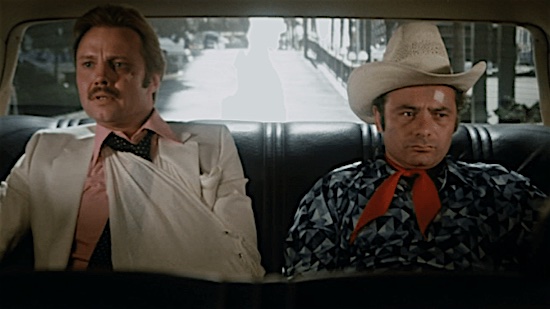
During the ’70s, one of Ashby’s fortes was his ability to find the best actors for his complex characters. That’s why it’s disappointing to see him go the other way and end up with some awkward casting choices during his ’80s output. Too stiff and monosyllabic, Jon Voight is a terrible choice to play Alex Kovac, a slippery motormouth gambler who’s supposed to come across as a lovable scamp. Voight was one of the writers on the project, and even he didn’t initially consider himself in the part. This supposedly madcap crime comedy about Alex and his cranky buddy Jerry (Burt Young, patron saint of grumpy character actors) heading to Vegas in order to win the money Alex owes to a New York mobster is filled with sit-com level coincidences and instantly predictable third act twists. Voight and Young share some chemistry, but Ann-Margret, who plays Voight’s melancholic love interest, is in sleepwalk mode.
7. Bound for Glory (1976)
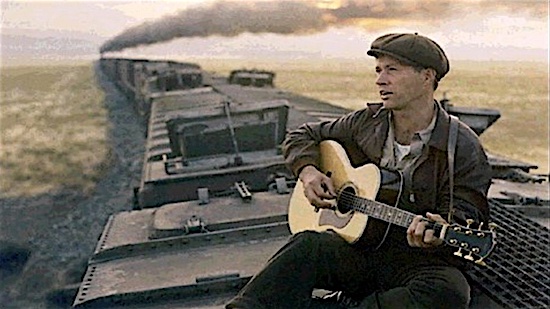
Now that we excised the refuse, let’s get to the good stuff. Ashby’s solemn yet passionate biopic about the determination of legendary folk singer/songwriter Woody Guthrie (David Carradine) to speak for the forgotten and abused working class of Depression-era America, while defending the importance of unionizing against all odds, is a cinematic love letter from one morally dedicated visionary to another. Carradine’s soft-spoken yet tenacious performance captures Guthrie’s essence, while Haskell Wexler’s stunning cinematography, awash in hypnotic sepia tones-and the first use of a Steadicam in a Hollywood feature to boot—lures us smack dab into the middle of the period. As expected from a music biopic, Bound for Glory is fairly episodic, and goes on a bit too long at two-and-a-half hours, but the intimate connection that Ashby establishes between Guthrie and his exploited comrades gets us through.
6. Shampoo (1975)

It’s no surprise that the superficial and narcissistic culture of Hollywood and Hal Ashby’s hippie sensibilities clashed with one another. Frustrated with people in the entertainment world deeming themselves god’s gift to men—bullying infallible supermensch on the outside, insecure man-babies on the inside—it was only a matter of time for Ashby to make a film skewering that group. His wish came in the form of Robert Towne and Warren Beatty’s script for Shampoo, a satirical look at a self-absorbed Hollywood hairdresser (Beatty) trying to advance his business in an undeserved self-aggrandizing way, only to have to face those he has screwed and undermined in the past. By having the story take place during the 1968 presidential election night, when tricky Dick won, the story creates a direct thematic parallel between the superficiality of Hollywood and the narcissism of Washington. Ashby elevates the material by directing Beatty in one of his most layered performances, and infusing borderline cartoonish characters with some grounded and relatable humanity.
5. Coming Home (1978)
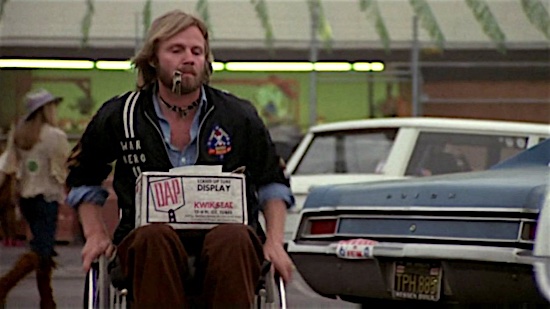
Born on the Fourth of July is not the first time a Hollywood feature was inspired by Vietnam vet Ron Kovic’s story. Inspired by Kovic’s struggles of adjusting to post-Vietnam life in the United States, Fonda wanted her production company to make a film about how the war affected those back home. That side of the Vietnam story was seldom told in mainstream films, so Coming Home swooped in to fill the hole. The romance between the lonely wife (Jane Fonda) of a deployed soldier (Bruce Dern) and a wounded veteran (Jon Voight) develops organically under Ashby’s direction, without veering into easy melodrama or tear-jerking schmaltz. The film’s frank depiction of female sexuality was a rarity, even during the socially braver period of ’70s Hollywood. Coming Home is one of those rare romances that pay off more than the base requirements of its genre, while also working as astute political commentary.
4. The Landlord (1970)
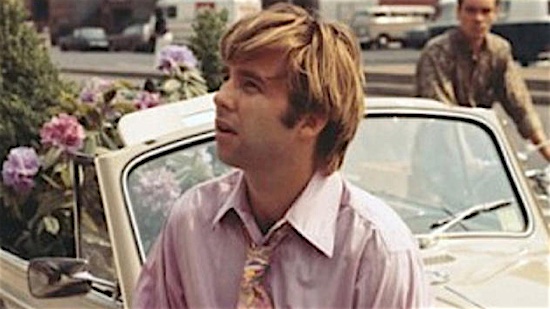
Almost fifty years before Get Out tackled subtle and passive-aggressive liberal racism, Ashby’s groovy culture clash comedy tackled the subject, albeit with hundred percent less impaling by stuffed dear heads. The story features a smug, spoiled, trust fund white boy named Elgar (Beau Bridges) buying an apartment building in a low-income neighborhood who falls in love with the eccentric yet down-to-earth residents. This brings the previously concealed racism of his parents to the foreground and provides the perfect canvas for mischievous and deliciously pointed sociopolitical satire. Ashby exposes the many prejudices hiding under even the most supposedly open-minded white communities. The film’s pacing full of fast cuts, inspired by the psychedelic pop art of the period, takes full advantage of Ashby’s past as an editor.
3. The Last Detail (1973)
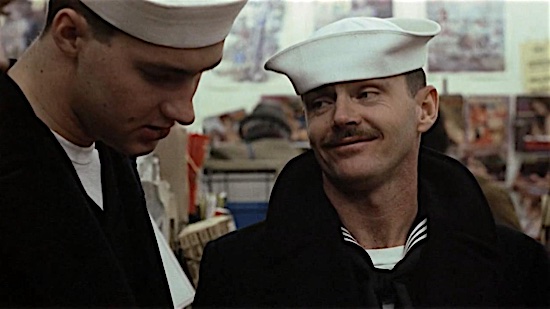
“War makes men out of boys” is more wishful thinking than fact. It’s hard to send children to die for their country and not expect them to become melancholic and depressed about losing their youthful innocence and the wistful, carefree experiences of childhood to Uncle Sam. One of the most deeply humanist war films ever made, The Last Detail follows two gruff and macho Navy officials (Jack Nicholson and Otis Young) escorting a naïve and inexperienced soldier (Randy Quaid) to his court-martial. Feeling sorry that the boy will go to prison without tasting certain joys of life, the officers use the trip as an excuse to take him to parties, get him laid, and of course, get him fall-on-his-face drunk, while rediscovering their own inner children in the process. Despite the premise being suitable for maudlin execution, Ashby doesn’t shy away from eventually resurrecting the kind of toxic masculinity that’s programmed in these men, leading to a climax that feels earned and inevitable.
2. Harold and Maude (1971)

This is ground zero for quirky indie dramedies about offbeat and counter-culture characters finding playful yet deep romance within each other. I’d be surprised if Wes Anderson doesn’t thank Harold and Maude for the existence of his career every day. Within the first five minutes, you’ll either fall in love with its absurdist and abrasively irreverent tone, or you will run for the hills. That’s part of its charm: It’s a singularly distinct experience with no comparable equal, yet has been the inspiration for so many copycats decades down the line. This quality makes Harold and Maude feel familiar and fresh at the same time, even almost half a century after its release. By keeping the tone as over the top and absurd as possible, while keeping the characters grounded and human, Ashby creates a once-in-a-lifetime experience that’s roaringly funny with its surrealist criticism of the stuffiness and emotional conservatism of society, while also managing to deliver one of the most tender love stories in film history.
1. Being There (1979)

If you’re still baffled by 45’s approval numbers while the dumpster fire of his presidency rages on, look no further than Being There, Ashby’s zen-like political satire masterpiece about the inherent simplicity of people, and how that can be what makes us special, while also leading to our downfall. Of course, the soft-spoken, tender, deeply empathetic, and loving Chance the gardener, a.k.a. Chauncey Gardiner (Peter Sellers in the role of his lifetime) is the direct moral opposite of Drumpf, but both work as empty vessels for others to project their own dreams and desires back to them. People want to hear empty platitudes that make them feel better about themselves, instead of having to face a more complicated truth. That’s how our hapless gardener, who never had any outside contact with the world apart from his obsessive consumption of television, turns into the refreshing and optimistic political leader America has been looking for. Having been raised on the saccharine and fake interpretation of the American dream as it was represented on TV, Chance becomes the perfect vessel to reflect those fantasies back to the broken people that surround him. With a soulful philosophical aura that surrounds the vicious satire, Hal Ashby’s way of telling us that maybe we take this life “thing” a bit too seriously, Being There becomes a prime example of great American cinema. Life, indeed, is a state of mind.